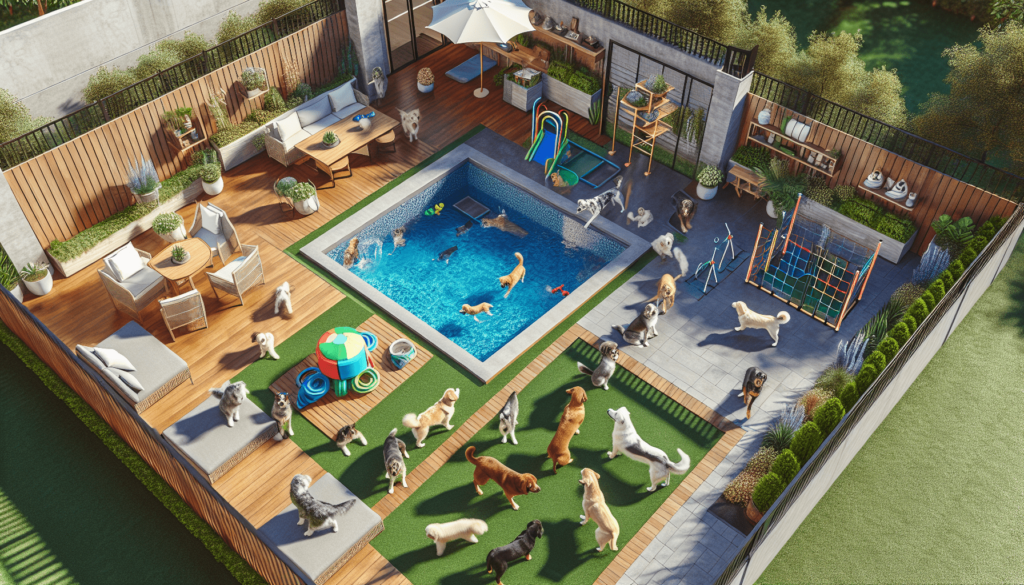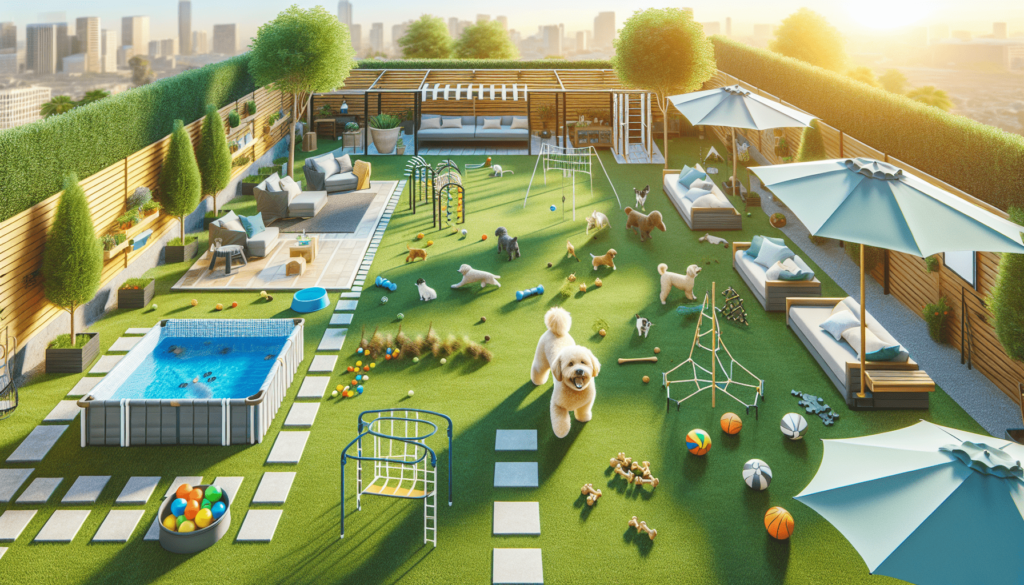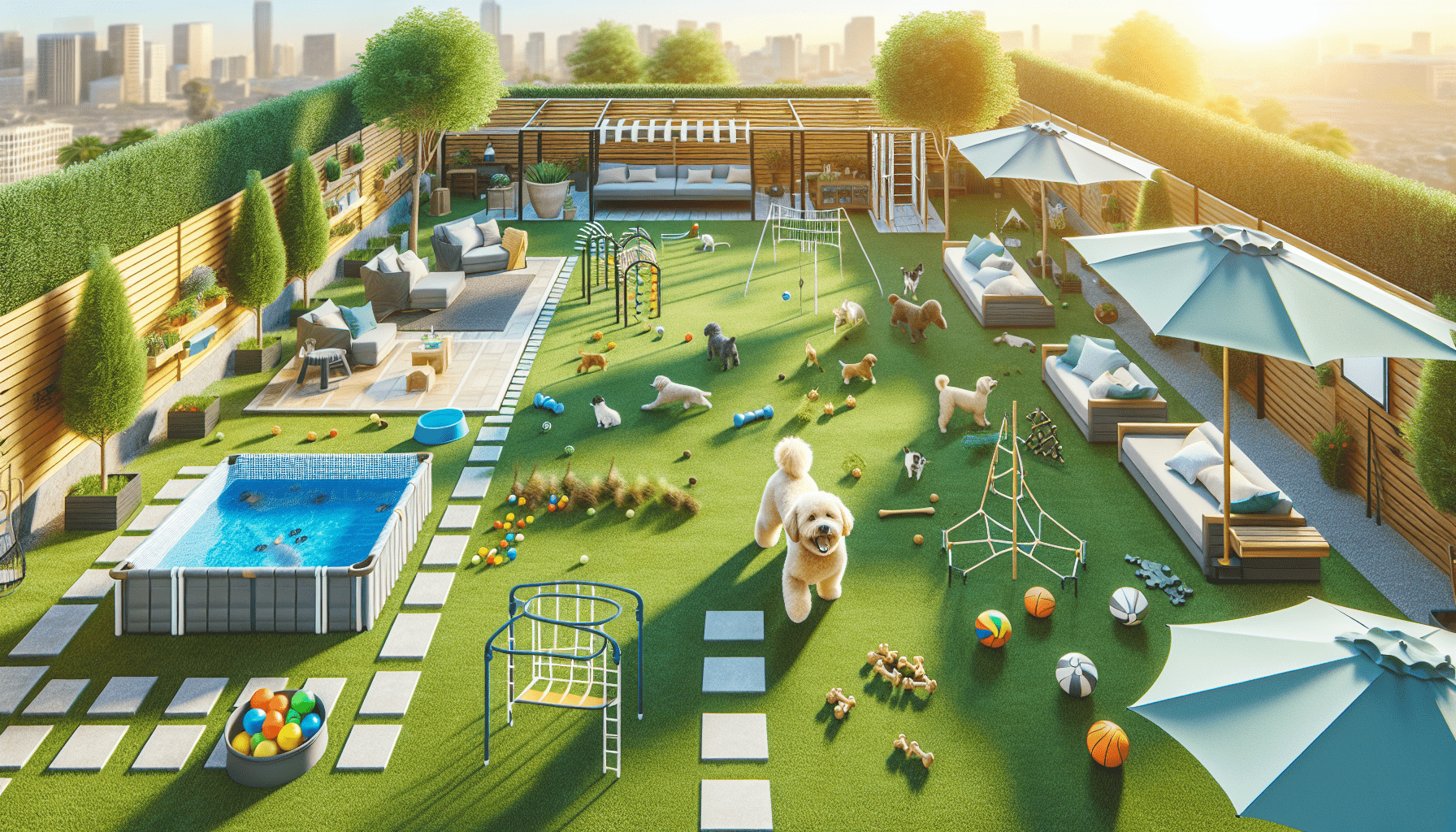Creating a dog-friendly backyard is not only beneficial for your furry companion, but it also provides a space for you to relax and enjoy with them. From considering the right plants to designing a safe play area, there are several ways you can transform your outdoor space into a haven for your four-legged friend. In this article, we will explore some practical tips and ideas to help you create a dog-friendly backyard that will have tails wagging with delight. So grab a cup of tea, sit back, and let’s get started on creating a paw-some outdoor space for your beloved pet.
Choosing Safe Plants
When creating a dog-friendly backyard, one of the first things to consider is the type of plants you have in your yard. Researching pet-friendly plants is essential to ensure the safety of your furry friend. Some plants can be toxic to dogs if ingested, so it’s crucial to avoid those. Instead, focus on selecting plants that are non-toxic and safe for dogs.
Start by doing some research on pet-friendly plants that are suitable for your climate and region. Many resources are available online and at your local nursery. Look for plants such as sunflowers, petunias, marigolds, and snapdragons, as these are generally safe for dogs.
It’s also important to avoid toxic plants such as azaleas, daffodils, lilies, and tulips, as these can be harmful if your dog consumes them. Keep in mind that even certain parts of a plant, such as the leaves or bulbs, can be toxic, so it’s best to avoid them altogether.
Lastly, consider providing shade and shelter for your dog. Having trees or large shrubs in your backyard can provide a cool and shaded area for your dog to rest in during hot summer days. Make sure to research and choose plants that not only provide shade but are also safe for your dog.
Creating a Secure Fence
A secure fence is essential to create a safe and dog-friendly backyard. Choosing the right type of fence is crucial, as it will depend on your dog’s size, breed, and escape tendencies. A fence that is too low or easily climbable may not effectively contain your dog.
Some popular options for dog-friendly fences include wood fences, chain-link fences, and vinyl fences. Wood fences can provide both security and aesthetic appeal to your backyard. Chain-link fences are sturdy and allow for visibility, while vinyl fences are low-maintenance and durable.
When installing a fence, it’s important to ensure there are no escape routes for your dog. Check for any gaps or holes in the fence where your dog might be able to squeeze through or dig under. Secure these areas to prevent any potential escapes.
Regularly inspect your fence for any damage or wear and tear. Dogs can be notorious for chewing or digging at fences, so ensure that any damaged areas are promptly repaired or reinforced to maintain a secure barrier.

Designing a Play Area
Dogs need space to exercise and play, so creating a designated play area is essential for a dog-friendly backyard. Providing a space specifically for exercise allows your dog to burn off energy and stay active, promoting physical and mental well-being.
Include dog-friendly toys and equipment in the play area to keep your furry friend entertained. Balls, frisbees, and chew toys are great options and can help stimulate your dog’s mind and alleviate boredom. Make sure to choose toys that are safe and durable to withstand rough play.
Consider creating different zones within the play area to cater to your dog’s preferences. For example, you could have an open space for running and fetching, a digging area filled with sand or a soft substrate, and a shaded area for relaxation.
Installing Artificial Turf
Artificial turf can be a great addition to a dog-friendly backyard. It offers numerous benefits for both you and your dog. The synthetic grass is soft and comfortable for your dog to walk and lay on, and it provides a durable and low-maintenance alternative to natural grass.
When choosing artificial turf, opt for a type that is specifically designed for dogs. These turfs are usually more resistant to pet urine and have better drainage systems to prevent odors and puddling. Consider the size and breed of your dog when selecting the appropriate turf, as different turfs have varying durability.
Maintaining and cleaning the turf regularly is important to keep it in good condition. Remove solid waste promptly and rinse the area with water to prevent odor buildup. Occasional deep cleaning with a pet-friendly cleaner can help keep the turf clean and hygienic for your dog.

Creating Dog-Friendly Pathways
Dog-friendly pathways are not only aesthetically pleasing but also provide a safe and comfortable walking surface for your furry friend. When designing pathways in your backyard, it’s important to use materials that are safe for your dog’s paws.
Avoid materials such as sharp gravel or rough stones that can cause discomfort or injury to your dog’s paws. Opt for softer materials like rubber mulch, pebbles, or compacted sand. These materials provide a more forgiving surface and are more comfortable for your dog to walk on.
Ensuring that pathways are well-lit and visible is crucial for the safety of both you and your dog. Use outdoor lighting along the pathways to provide visibility during nighttime walks. This will help prevent accidents and ensure you can easily navigate through your backyard.
Adding dog-friendly signage can also be helpful, especially if you have guests or visitors. Signage can indicate areas where dogs are allowed or highlight potential hazards, such as steps or changes in elevation, to ensure everyone’s safety.
Adding Water Features
Water features can add an extra element of fun and relaxation to a dog-friendly backyard. Providing a drinking water source is essential to keep your dog hydrated, especially during hot summer months. Consider installing a pet-friendly water fountain or ensuring there is always fresh water available for your furry friend.
Including a small dog-friendly pool or fountain can also be a great way to provide entertainment and relieve heat during the summer. Dogs often enjoy playing and splashing in water, so having a designated area for water play can make your backyard a true canine paradise.
Safety considerations for water features are crucial to prevent any accidents or drowning incidents. Ensure that any pools or water features are adequately fenced off or have secure covers. Always supervise your dog when they are around water to avoid any potential hazards.
Building a Doghouse or Shelter
A comfortable and weatherproof shelter is essential for your dog’s well-being, especially if they spend long periods of time in the backyard. Designing a doghouse that provides protection from the elements is crucial to ensure your dog’s safety and comfort.
Choose non-toxic materials when building a doghouse to prevent any potential harm to your dog. Avoid using pressure-treated wood or toxic paints that can be harmful if ingested. Opt for natural and safe materials that are durable and weather-resistant.
Insulating the doghouse is important, particularly if you live in an area with extreme temperatures. Ensure that the doghouse is well-insulated to keep your dog warm during the cold winter months and cool during hot summers. Provide bedding or blankets for added comfort and warmth.
Including Digging Areas
Dogs often enjoy digging, so providing a designated digging spot can help redirect their behavior and save your garden. Choose an area in your backyard where you don’t mind your dog digging and fill it with a soft substrate such as sand or mulch.
Encourage your dog to use the designated digging area by burying toys or treats for them to discover. Praise and reward your dog when they choose to dig in the designated spot, helping them understand that it is an acceptable behavior in that specific area.
Redirecting your dog’s digging behavior can help preserve the rest of your backyard and prevent them from digging up plants or causing damage. Consistency and positive reinforcement are key in training your dog to use the designated digging area.
Ensuring Proper Waste Management
Proper waste management is essential in maintaining a clean and hygienic dog-friendly backyard. Installing a dog waste disposal system, such as a pet waste station or a poop bag dispenser, can help keep your backyard free of waste and prevent any unpleasant odors.
Regularly cleaning up after your dog is important to prevent waste buildup and potential health hazards. Scoop the yard daily to remove solid waste and dispose of it properly. Use biodegradable poop bags that are environmentally friendly.
Consider using eco-friendly waste disposal methods, such as composting or flushing dog waste down the toilet (if permitted in your area). Avoid disposing of dog waste in regular trash bins, as it can contaminate the environment and pose health risks.
Creating a Relaxation Space
Creating a relaxation space in your dog-friendly backyard allows both you and your dog to unwind and enjoy quality time together. Provide comfortable seating options for yourself, such as outdoor loungers or hammocks, and consider incorporating a designated area for your dog to rest.
Adding shade to the relaxation area is crucial, as it will protect you and your dog from the sun’s harmful rays and provide a cool and comfortable spot. Consider using umbrellas, canopies, or planting trees to create natural shade in the area.
Using calming scents and sounds in the relaxation space can help create a tranquil and soothing environment. Consider planting lavender or jasmine, which emit calming scents, and incorporate a water feature or wind chimes for soothing sounds.
In conclusion, creating a dog-friendly backyard requires careful consideration and planning. From choosing pet-friendly plants to designing a play area and providing a secure fence, each aspect contributes to ensuring the safety and happiness of your furry friend. Remember to regularly inspect and maintain all features of your backyard to ensure a safe and enjoyable environment for both you and your dog.

